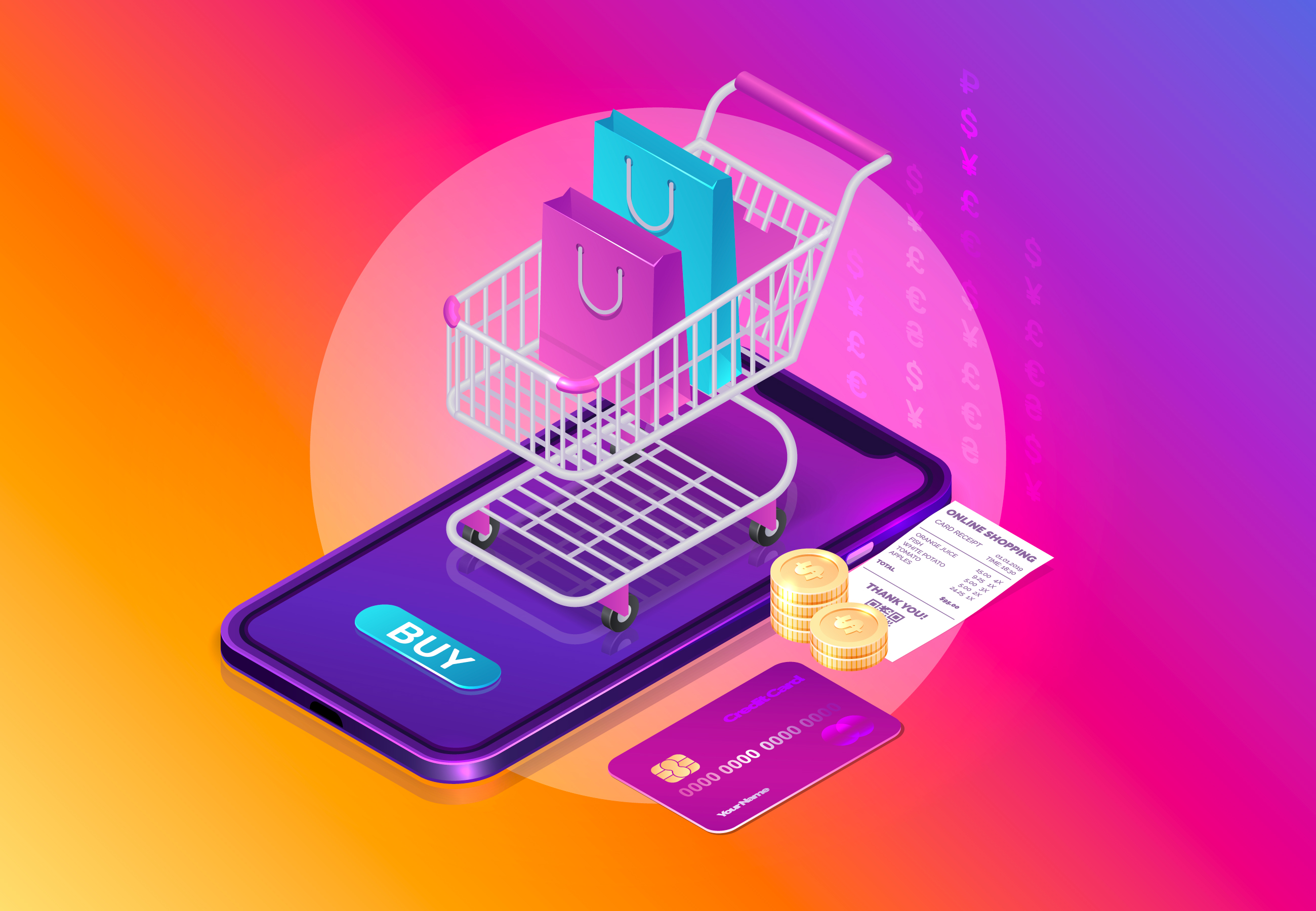Years ago, I was helping a friend with her online store, and, boy, was she a dreamer. Every time something new came out, she wanted to know about it, learn it and figure out how to use it to boost sales.
She was a good entrepreneur, but succeeding takes more than great ideas and open-mindedness towards the ever-evolving digital world. It also takes knowing which of those ideas are worth chasing.
Not every new thing is a good thing, and you want to make sure you’re investing in the right channels to grow your ecommerce business.
Now when evaluating ecommerce trends and which channels to nurture, it’s apparent that social commerce is becoming a popular choice.
We’ve discussed the risks and rewards of Facebook Shops, but it’s time we take a look at its adopted child’s new feature: Instagram Checkout.
The Difference Between Instagram Shopping and Checkout
As an ecommerce store selling on Instagram, you have two options: Instagram Shopping or Instagram Shopping with Checkout.
Instagram Shopping allows you to create product catalogs for shoppers to view on your Business Profile. Each product has a detail page, and you can tag your products in posts or stories. If a user clicks through a product detail page or tag, it takes them to the product page on the brand’s website to learn more and purchase the item.
Instagram Checkout, however, allows users to complete the entire purchase and checkout process in the app itself.
Both Instagram Shopping and Checkout require businesses to submit their products through Facebook to show up on Instagram. Checkout requires more from businesses as they need to fully integrate with Instagram’s system to make checkout and shipping processes possible.
Currently, Instagram Checkout is only available to US businesses that meet specific eligibility requirements. As time goes by, they will continue rolling it out to more businesses and ecommerce partners.

Pros of Instagram Checkout for Ecommerce
Valuable Reach
Like Facebook, Instagram offers an appealing audience. With 1.16 billion monthly active users and high engagement rates, it’s easy to picture finding your customers on the app – especially as older demographics continue to hop on in larger amounts.
But Instagram users aren’t just engaged; they also follow businesses on the regular. In fact, 90% of users follow a business.
Effective Ad Placement
Another benefit of selling on Instagram is ad placement. With a large user base and the amount of data Instagram pulls from those users, it’s relatively easy to target your ads effectively.
Plus, when advertising your ecommerce business, Instagram is an excellent option due to its visual nature. Ads on the platform are attention-grabbing and fit in well with the native environment.
Though you don’t need to sell your products on Instagram to make use of their ad services, it’s less shocking to reroute users from an ad to another Instagram page instead of an external website. Instagram can also pull data from how users interact with your shop within their app to continue better targeting your audience.
Shorter User Flows
The less complicated your ecommerce user flows, the better.
By using Instagram Checkout, users remain in familiar territory throughout the sale and have fewer steps to take to navigate purchasing your product.
By shortening the steps between discovery and sale, you make buying your product easier and faster. This means less time for users to change their minds or become distracted. The idea is that this will increase your conversion rate.
There are risks associated with never bringing users to your territory (your website), but we’ll get into those later.
Influencer Marketing and UGC
As a visual platform, Instagram is a great place to take advantage of influencer marketing. Even micro-influencers make a big difference by partnering with brands to sell to niche markets.
While influencers can direct audiences to your website over an Instagram shop, it’s only with a shop that ecommerce businesses can take advantage of product tags.
Product tags allow you to tag products in an image, so viewers can visit product pages and learn more about them.
You can combine product tags with influencer posts or user generated content (UGC). UGC content often feels more natural to audiences as it showcases real people using and loving your products.
To encourage businesses to use the Checkout feature in addition to Shopping, Checkout provides the unique ability to highlight products in post captions and bios.
Live Shopping and Product Launches
Only Checkout-enabled Instagram businesses have access to two nifty features: live shopping and product launches.
With Live Shopping, you can add product collections and tag products within your livestream, so consumers have an easy way of finding and purchasing the products you’re sharing.
Product launches allow you to build hype and awareness around a new product before it releases with special features, including countdowns and product reminders.
Cons of Instagram Checkout for Ecommerce
Lost Data and Re-Engagement Opportunities
When you use Checkout for your business, you lose all the user data to Facebook and Instagram that you would have otherwise gained through your website. While this data will be used to benefit your ad targeting on those platforms, there’s a lot of value in obtaining data through your website.
For one, you get to learn about your customers’ interests and behaviors so that you can improve your content and marketing strategies. Data on user behavior on your website is critical to enhancing your website’s usability and increasing sales on that front.
Checkout also receives and saves all customer contact and financial information, making it easy for customers to checkout on Instagram. This is data that, if in your hands, you could use to spur re-engagement and future sales. Take, for instance, the value of a customer’s email address in generating sales and loyalty through email marketing.
You can also optimize your forms to autofill form data, so buyers get the same speedy benefit from your online store.
No Control Over Customer Experience
Perhaps the worst con to using Instagram Shopping and Checkout is the complete loss of control over your customer experience.
With shopping, you’re essentially promoting Instagram over your brand and business. While you can write product descriptions in your voice, the look and feel of the platform are Instagram-heavy.
And if you use Checkout instead of directing visitors to your website, your customers don’t get to experience your brand, lessening the opportunities for you to develop brand loyalty and provide a memorable shopping experience.
Selling with Instagram Checkout also puts Instagram in control of all customer communications, limiting your ability to interact with customers. If that wasn’t enough, you have to follow all of Instagram’s rules regarding products, shipping and returns.
This all adds up to mean that:
- Instagram is making meaningful connections with your customers instead of you.
- If Instagram messes up, there’s nothing you can do about it.
Competitor Presence
When someone shops on Instagram, they’re shopping on a platform that promotes and provides access to your competitors.
Sure, the internet is a competitive place, and many people conduct research and price comparisons before making a purchase. But at least when they’re on your website, your products are the only ones present.
Your website also contains fewer distractions than a social platform where potential buyers are flooded with messages, feed posts, stories, notifications and more.
Fees Increase With Order Value
Getting charged a fee each time you sell a product is already a downside, but it can be worth it if the platform increases sales.
According to Facebook’s Business Help Center, the selling fee for Instagram is a flat fee of $0.40 for shipments of $8.00 or less. For shipments over $8.00, the fee is 5% per shipment. These fees can end up taking a chunk of your profit.
If your goal is to increase your average order value, 5% can add up to a significant loss per sale. Plus, raising your average order value is easier to do on your website, where you control user flow and selling tactics.
Stay In Charge of Your Business
Ask yourself:
Whose business do you want to promote, and who do you want to be in charge of yours?
If you want to foster customer loyalty for your brand and not Instagram’s, it’s essential to consider how you’ll manage that when the entire selling process occurs on Instagram’s platform.
If you want to be in control of your business – its presence, strategy, and customer experience – it’s worth considering if you want to give Instagram so much power.
There are many benefits to using Instagram as a business, whether for marketing or selling directly, but the platform should never take priority over your own. If your website sucks and you think selling on Instagram will be easier, know that you should fix your website or risk limiting your business’s growth.
While Instagram Checkout comes with some great features, its advantage over Instagram Shopping is unclear. It may simplify the buying process for customers, but you can do that on your website without forfeiting your data, brand, order value and lifetime loyalty.
Consider using Instagram Shopping and directing buyers to your website instead of using Checkout. And, of course, make sure you’re prioritizing your website’s CX and usability.


